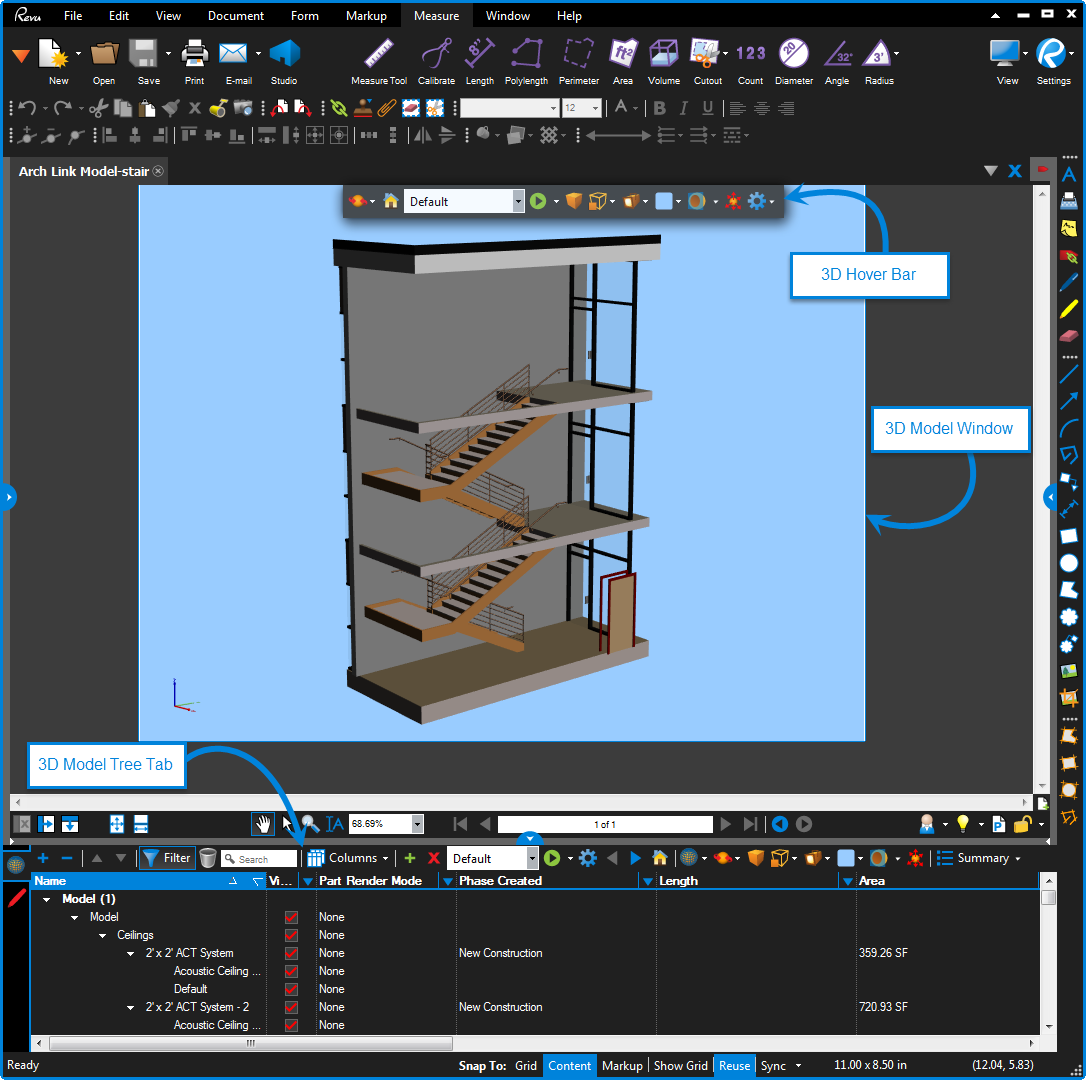3D models appear in Revu as a rectangular 3D Model window within the PDF page. When a 3D Model window is present, a 3D Hover Bar appears to provide additional controls. In addition, the 3D Model Tree tab offers advanced options.

Click and drag the mouse to interact with a 3D model. The behavior of the mouse can be changed on the 3D Hover Bar or on the 3D Model Tree button bar. The default behavior is for the mouse to rotate the model. Clicking the scroll wheel will pan.
To change the mouse interaction model, select the desired mode from the  Mouse Interaction menu (see note below) on either the 3D Model Tree tab or the 3D Model Tree tab toolbar. The available modes are:
Mouse Interaction menu (see note below) on either the 3D Model Tree tab or the 3D Model Tree tab toolbar. The available modes are:
Rotate: Moves the camera around the model.
Spin: Rotates the model around a point that is specified in the model. In most cases Rotate and Spin have very similar behavior. However, Spin may prove more useful on models that have no defined tilt.
Pan: Moves the model up/down and left/right in the 3D Model window.
Zoom: Moves the viewpoint in or out to increase the relative size of the model.
Camera: Rotates the viewpoint from the position of the camera, for an effect similar to tilting one’s head up or down, or rotating it left or right.
Select: Select parts so they can be moved, rotated, copied or deleted.
Note: The icon for the Mouse Interaction menu will change to reflect the mode that is currently selected.